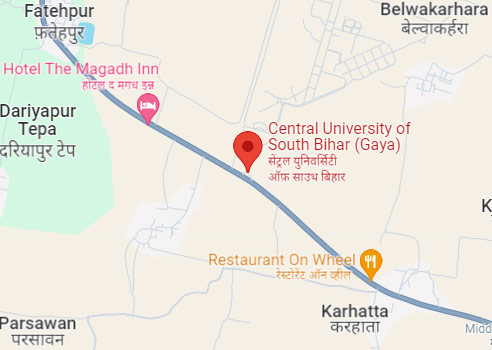Due to urbanization, agricultural land in Gaya is decreasing rapidly, worrying facts came to light in the research of CUSB Assistant Professor Dr. Firdaus Fatima Rizvi
Due to the increasing population of Gaya city in Bihar, there have been significant changes in land use and land cover (LULC) over the past 22 years (Year 2000-2022), resulting in substantial damage to agricultural land. A recent study conducted by research scholar Alok Kumar Dubey from the Department of Development Studies at Central University of South Bihar, faculty member Dr. Firdaus Fatima Rizvi from the Department of Economics, and PhD student Akash Tiwari from the Department of Geography at Haryana Central University found that during this period, there was a 58% reduction in agricultural land, primarily due to urbanization and the expansion of built-up areas. This study, conducted using GIS and remote sensing techniques, utilized the CA-Markov model to predict changes in land use up to the year 2030.
According to research published in the journal ‘Transactions of Indian Institute of Geographers’ (Volume 45, Issue 2), which is indexed in the global database Scopus, the agricultural land in Gaya city was 1908 hectares in Year 2000, which reduced to 810 hectares by Year 2022. If the current trend of urbanization continues, it is estimated that this will further decrease by 19% to only 657 hectares by Year 2030, posing a serious threat to Gaya's food security and environmental balance. A significant increase in the built-up area has been observed, rising from 1543 hectares in 2000 to 2560 hectares in Year 2022. This trend is likely to continue until Year 2030, when the built-up area could reach 2580 hectares.
However, the study also noted an increase in forest area due to government water conservation and afforestation programs. The forest area was 255 hectares in Year 2000, which increased to 694 hectares by 2022. It is estimated that this area could further increase to 726 hectares by Year 2030, indicating a positive change in green cover. However, there has been a 16.66% decline in water bodies (ponds, rivers), which is a concerning sign. The study also clarified that there were 913 hectares of barren land in Year 2000, which decreased to 580 hectares by 2022, but there is a possibility of an increase in barren land again by Year 2030, indicating the impact of climate change and the uncertain patterns of rainfall.
The increasing urbanization in Gaya city is the most significant factor affecting agricultural land. Due to the expansion of the city, agricultural land is rapidly being converted into residential, industrial, and commercial uses, which not only impacts farmers' livelihoods but also affects local food production. If this trend continues, nearly two-thirds of agricultural land could be lost by Year 2030, leading to serious repercussions for food security, environmental sustainability, and the rural economy.
Researchers suggest that the government should implement strict policies to control urban expansion. Without the rigorous enforcement of land use planning and conservation policies, it will be challenging to protect agricultural land in Gaya city. This requires the protection of arable land within urban limits, the promotion of green spaces, and the adoption of sustainable urban development plans. Otherwise, agricultural land in historical and agriculture-centric cities like Gaya could nearly vanish, severely impacting local food production and exacerbating environmental imbalances.







